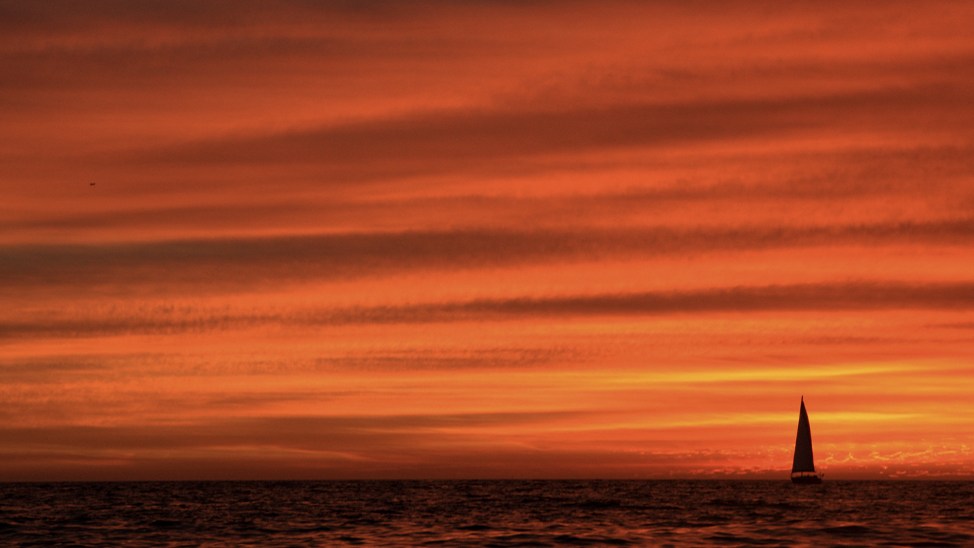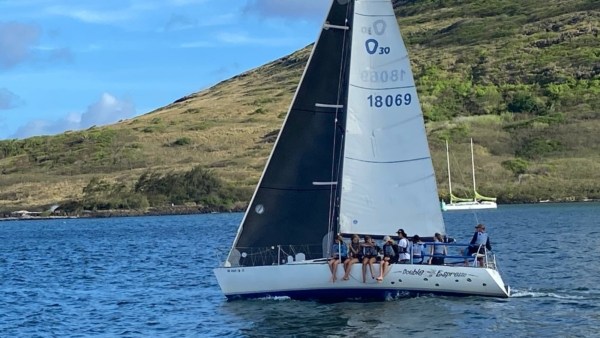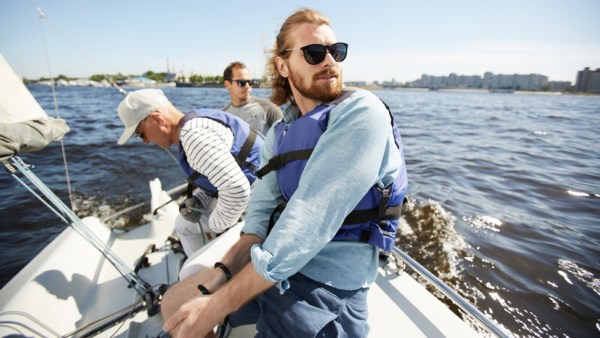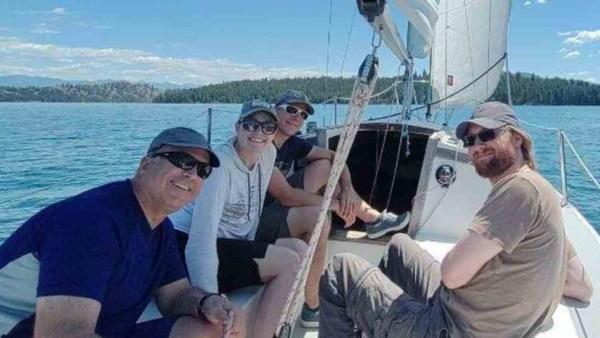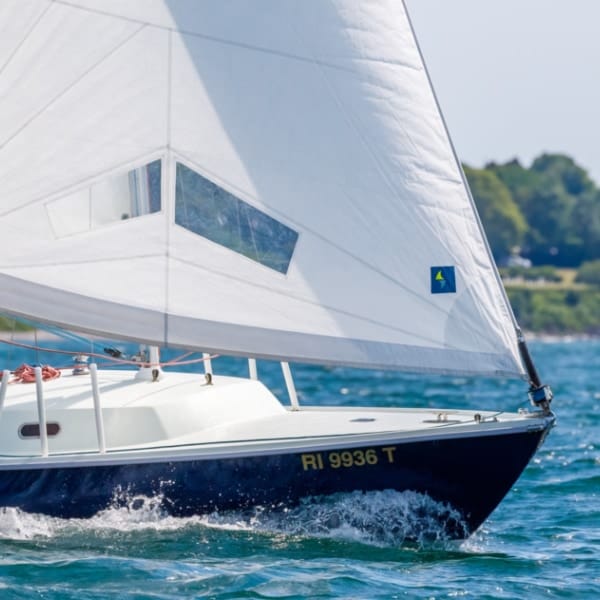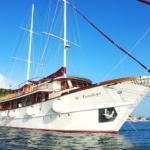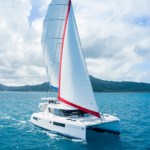A common theme among us sailors is that we want to take that next step no matter where we are on our sailing education ladder. My wife has listened to my wild ideas about sailing the world for years. Her rational mindset has helped me take baby steps toward one day being the guy you meet on a remote island with leather skin and endless sailing stories. One can dream, right?
As you gain sailing experience and expand on your sailing education, you, too, will have the desire to get to that next level. Your growing confidence and knowledge now have you set to plan a sailing vacation. Planning a 7-day bareboat charter requires careful consideration of various factors to ensure a smooth and enjoyable sailing vacation.
Here’s a step-by-step guide to planning a sailing cruise:

Choose Your Destination
Consider your sailing experience.
Are you looking for culture, scenery, or climate?
Deciding on a sailing adventure requires thoughtful consideration of your experience level and the conditions of potential destinations. Various factors, such as seasonal sailing conditions, navigational complexities, and your sailing background, should be considered when choosing a location.
When navigating the waters, particularly for first-time charters, it’s essential to be realistic about your skills and comfort level to avoid unnecessary stress. Charter companies often categorize destinations into different “levels” based on factors like sailing conditions, distances, and access to safe harbors. To ensure a low-stress vacation, consider chartering in familiar waters or places where you’ve previously taken sailing courses. This approach allows you to build valuable experience in living aboard and operating a boat while offering a fresh perspective on familiar sailing grounds. In plotting your course, thorough research on the sailing area, identification of key attractions, anchorages, and marinas, as well as planning a flexible itinerary, will contribute to a more enjoyable and fulfilling sailing experience.
Popular sailing destinations, including the Mediterranean, the Caribbean, the Whitsundays, and the British Virgin Islands, offer diverse experiences but also come with their own challenges. Be sure to utilize resources such as local sailing schools or charter companies when researching sailing conditions in unfamiliar destinations.
Find an American Sailing School that offers Charters

Selecting the Right Boat
Monohull or Catamaran?
How big is your group?
When selecting the ideal boat for a sailing vacation, aligning the choice with your group size and sailing proficiency is crucial. Traditional monohulls are usually less expensive but can be limited in space. While catamarans provide enhanced comfort and stability, the ability to operate a catamaran is a skill that not all sailors have achieved at this point in their sailing career. ASA 114 focuses on cruising catamarans and is recommended for a bareboat charter aboard a catamaran.
Evaluate amenities such as cabins, bathrooms, kitchen facilities, and deck space to ensure they meet your comfort and practical needs. Consider who is sailing with you and what your crew requires and prefers for a multiday sailing journey.
Additionally, prioritize safety by confirming that the chosen boat adheres to safety requirements and is well-maintained. Researching the charter company you choose to rent a boat from is vital. The cliche, “you get what you pay for,” is definitely at play when selecting a bareboat charter operation.
Choosing the right boat for your sailing charter can be simple as you only need to think about four basic questions :
- How many people?
- How big of a boat? – Does size matter?
- What type of boat? Monohull or Catamaran
- How much do you want to spend? – Luxury or budget?
Take a look at some suggestions for choosing a boat for your first sailing charter.

When to Travel
When is the best time to visit?
Do you want to avoid crowds? Hurricanes?
Ensuring a safe and enjoyable sailing experience involves thorough research into the climate and seasons of the chosen destination. Consider factors such as temperature, precipitation, wind patterns, and storm seasons to determine the best time to visit. Avoid regions with hurricane seasons, particularly in places like the Caribbean. It’s essential to align your sailing plans with favorable weather conditions and avoid areas prone to adverse weather events. Seek local knowledge from the charter company for insights into the destination’s weather patterns.
During your trip, stay vigilant by staying updated on weather conditions, planning daily routes based on the forecast, and remaining flexible to adjust plans as needed. This proactive approach enhances the overall safety and enjoyment of your sailing adventure.
Always consider the travel seasons when choosing a destination. Sailing Europe during the high season is challenging as you encounter crowded anchorages and cities. The plus side to the high season is longer hours at restaurants and marina offices. Shoulder season often means fewer crowds but diminished services. As fewer people are traveling to a destination, not all amenities may be available, such as fueling docks, seasonal restaurants, and attractions.

Assembling Your Crew
Your crew will dictate the success of your trip.
What is important to you compatibility, capabilities, experience?
When assembling your sailing crew, prioritize a diverse skill set that encompasses navigation, sailing proficiency, experience and compatability. Have open discussions about roles and responsibilities to promote effective communication on board. Additionally, take into account the physical fitness and overall health of your crew, recognizing that sailing involves a degree of physical activity. By ensuring a well-rounded mix of skills and addressing the physical well-being of your team, you contribute to a cohesive and capable crew.
Selecting the right crew for a sailing vacation hinges on the overall enjoyment of the cruise. The people you sail with significantly contribute to the quality of your experience, given the close quarters and shared responsibilities during a weeklong voyage.
Crew Qualities:
The three Cs – Capability, Compatibility, and Compromise – serve as a practical framework for choosing the right companions.
Compromise.
Sailing with a group involves living closely with diverse individuals who may have varying preferences on aspects like sailing, sleeping, or socializing.
Crew Capabilities.
Considering the capabilities of your crew, especially on the first charter, is particularly useful. Having at least one experienced individual as the first mate adds a layer of safety and preparedness.
Compatibility.
Compatibility beyond sailing, encompassing activities ashore, relaxation at anchor, and shared expectations for the trip are vital.
Here are some topics and traits to think about when assembling a crew for a cruise:
- Sailing/cruising skills
- Health and stamina
- Domestic chores
- Shoreside interests
- Food
- Alcohol
- Smoking
- Music
- Humor

Provisioning
Where will you eat, ashore or on the boat?
Will you provision yourself or does the charter company have provision services?
When preparing for a sailing trip, planning of meals is crucial, taking into account storage limitations and available cooking facilities on the boat. Create a detailed shopping list covering food, beverages, and other essentials. Consider exploring provisioning services offered by the charter company or plan to shop yourself. The social aspect of sailing gatherings often revolves around good food and drinks, acting as a focal point for shared experiences. Consider crew preferences, dietary restrictions, and the frequency of dining ashore as you plan your provisioning.
Researching local provisioning options, such as grocery stores and fresh markets, is essential. Charter companies often offer convenient provisioning plans tailored to different needs, encompassing breakfasts, lunches, snacks, and some dinners and desserts. These plans can be pre-selected, providing a hassle-free and indulgent start to the charter. Additionally, charter companies may offer basic starter packages or comprehensive provisioning options to meet various needs throughout the sailing vacation.

Navigation and Safety
The charter company safety briefing is important. Don’t miss it.
The significance of navigation and safety on a bareboat charter cannot be overstated. It is imperative to familiarize oneself with navigation tools and charts specific to the sailing area to ensure a smooth and safe journey. Prioritize safety by confirming that the boat is equipped with essential gear, including life jackets, flares, and a comprehensive first aid kit. Additionally, a thorough review of emergency procedures and the precise location of safety equipment on the boat is crucial.
During your initial briefing your charter company will go over all of the important information needed to operate the vessel in a safe manner. Most charter companies will also give you a chart briefing and discuss potential navigational hazards. This is where your attention is required and your note taking should be copious.

